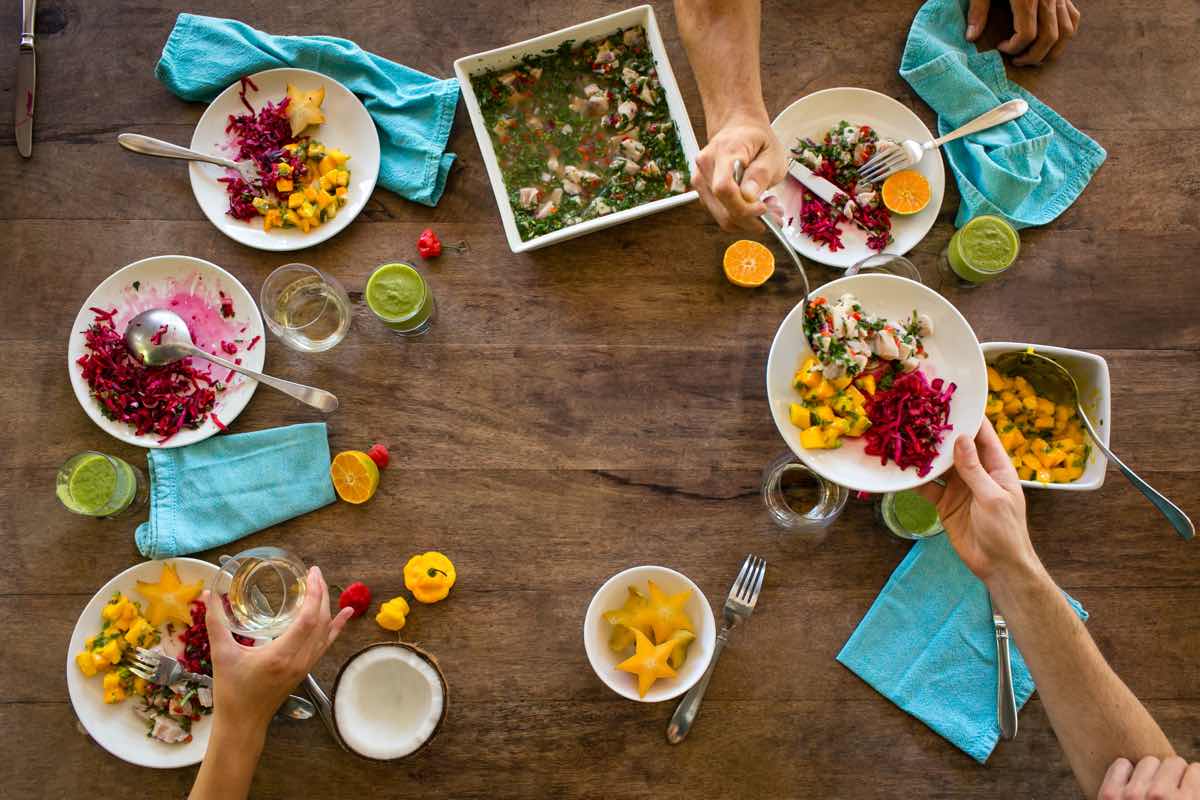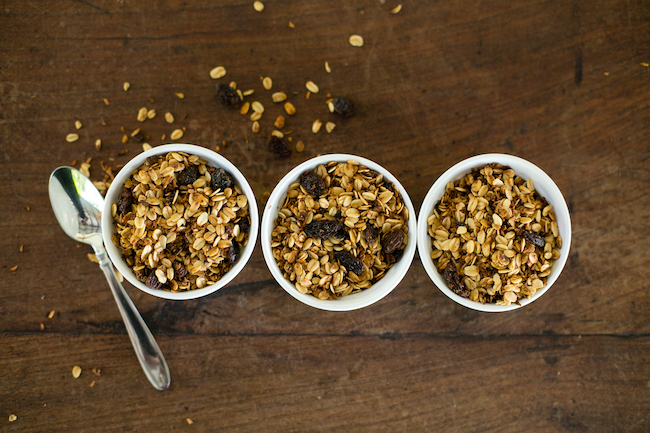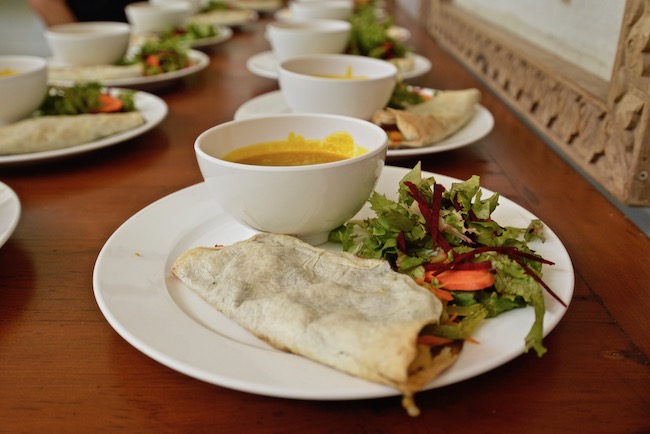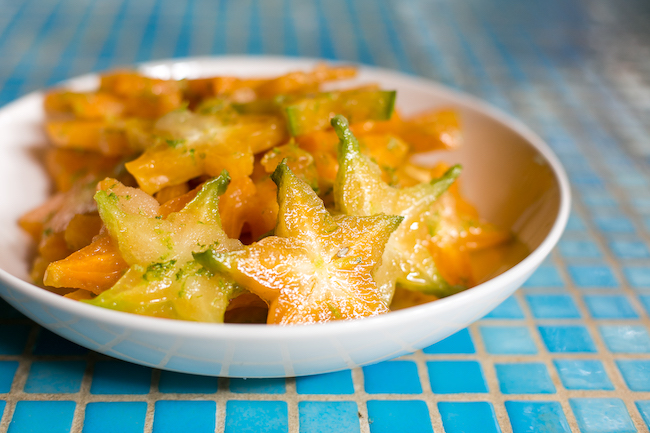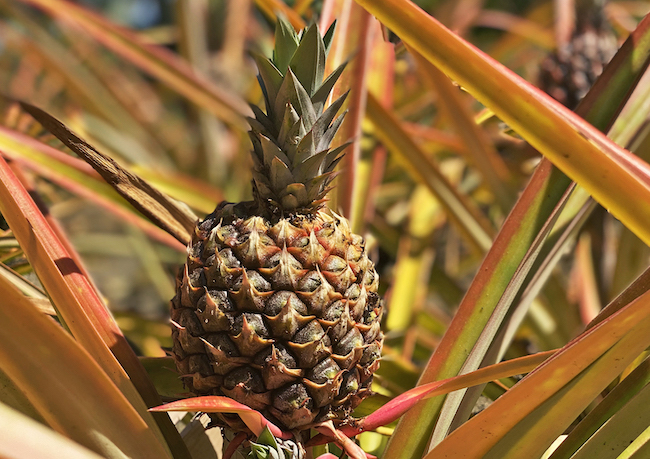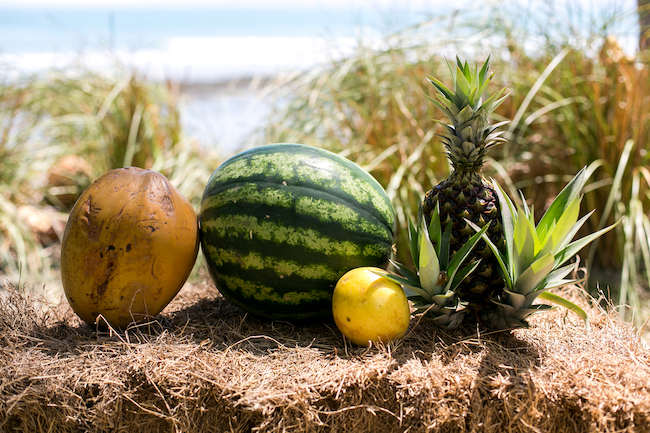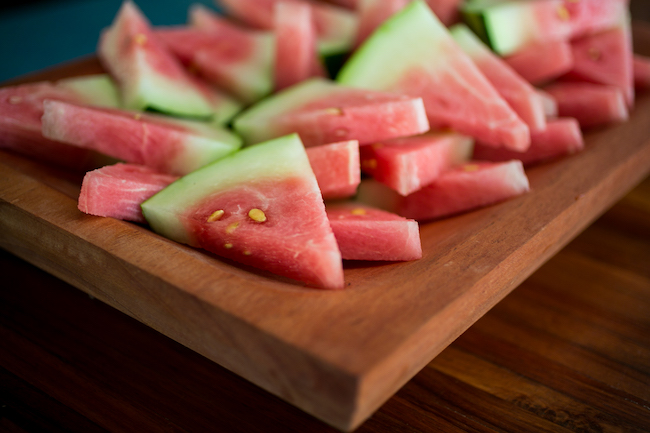Food is fuel – we have all heard this phrase before. But what if I were to tell you that food is actually more than just fuel. Food is life, food is community and food is happiness. This is why we should pay attention to not just what we eat but also the background of our food.
Think about how you feel after eating a deliciously prepared meal with ingredients taken straight from your backyard. Don’t those vegetables have so much more flavor? And those fruits, have you noticed how much sweeter they are? When was the last time you enjoyed a papaya harvested right off of the tree?
If you live somewhere colder, like Canada, tropical fruits like mangos and papayas are often bland…not to mention expensive! This is because they spend less time in the sun as they are specifically grown to withstand long transportation times. It takes a long time for a star fruit grown in Costa Rica to get to a grocery store in North America…
Want to take your transformational journey to the next level? At Blue Osa, we not only offer amazing yoga retreats but all of our food supports the local economy by focusing on farm-to-table cuisine. Think about taking a break from your everyday life and learning more about the world of wholesome, nutritious, and locally sourced food. Blue Osa will be sure to provide you with an excellent culinary mouth-watering sensation. Tired of UberEats and your typical go-to dinner? Then a trip to Blue Osa might be the best decision for you.
Why You Should Care About the Background of Your Food
The background of your food matters. Not just for your overall health but for the environment as well! There are many reasons why you should care about the background of your food. From supporting local farmers to even enhancing the mind’s ability to think. So let’s take a deeper look into why farmer’s markets, seasonal foods, and paying attention to native plants in your area is the next step to take towards the rest of your life.
The Importance of Nutrition
Nutrition plays an important role in our lives. It can dictate how we feel, think, and even how we act. Therefore, we should care about what we put into our bodies. Of course, it’s completely okay to allow all foods into your diet (unless you have an allergy or restrictions). But overall, we should be paying more attention to sourcing our foods locally. Healthy living goes beyond drinking enough water and making sure we get our intake of fruit and veggies.
As a critical part of health and development, proper nutrition allows us to function. While also keeping our bodies moving. In recent years, more attention has been placed on healthy living and eating well. But what about where we are getting our food from? We all know that fitness and exercise are important components of a healthy lifestyle. However, food is just as, if not more important.
Eating properly can do amazing things for the body. Not only can good nutrition increase energy, enhance productivity and boost your mood. But it can also help prevent many health issues like diabetes, high blood pressure, and obesity. It’s important to incorporate healthy routines into your life, such as a daily yoga practice or even a stroll through nature. However, following a good food plan can also help you live a happier and healthier life.
Why You Should Care About the Background of Your Food
Without food, we would not survive. That is a fact. Thankfully, people around the world are becoming increasingly interested in eating healthy and paying attention to what they eat. In some cases, this is to help the environment. But in other cases, it’s for the body. Either way, it’s also important to know about the background of your food so that you can get the most health benefits out of your meal.
Food has the power to tell a story. Think about your grandmother’s favorite recipe or a big holiday dinner. We look forward to these meals because they are made with love and oftentimes, great ingredients. Culture can play a big part in what we eat. And for many places around the world, traditional dishes are made with local ingredients. For example, when Indian dishes incorporate a lot of cardamom because this is a spice commonly grown within the country. This type of food not only nourishes the body but the mind and soul as well. Just like yoga!
Creating dishes made of local ingredients not only pays homage to our culture but also to the land around us. When traveling, eating local foods from different cultures is a great way to experience parts of life around the world. Sometimes, chefs will even begin to explore recipes from other cultures to broaden their skills. The background of your food matters, so why not take advantage of learning about where your food comes from to enhance your culinary talents!
How to Be an Eco-Friendly Consumer
Everything in life is interconnected. This means that your choices on one thing will inevitably affect another.
For example, when you buy your food from your local grocery store and are looking for “fruit”, pay attention to where your fruit is coming from. If you are living in Ontario, Canada during the summertime, this is a great opportunity to purchase provincially grown berries! Not only will they be much sweeter and juicer. But the distance they need to travel to get from farm to store is much less compared to other products.
In contrast, if you are looking to buy apples in Canada during the middle of winter they will be much more expensive. Not to mention that the travel time will be exponentially increased. This is because they will need to be imported from outside of the province. Although, Ontario does have great apples in the fall!
In contrast, buying fruit such as apples in the wintertime may not be eco-friendly. Because the apples have to travel a long distance to reach your dinner table, they are more expensive and have a higher carbon footprint.
Think About Where Your Food is Coming From
Transporting food over long distances also greatly increases carbon dioxide emissions. The longer your food needs to travel, the more carbon will be released into the atmosphere. It’s also a great idea to eat as many whole foods as possible. Whole foods invites you to focus on reducing your single-use plastic consumption.
When we buy food items like chips, cookies, and crackers we typically have to throw away the packaging they come in.
Although it’s definitely okay to enjoy these things, consider making them yourself at home! There are lots of great recipes, like this gluten-free chocolate chunk cookie recipe that allows you to still enjoy treats without the waste. We all want to do our part to help the earth.
So why don’t we all work together to save the planet and make some great desserts while we’re at it!
How Blue Osa Cares About Your Food
Located in the Osa Peninsula of Costa Rica, Blue Osa is a laid-back spa and yoga beach resort that has a focus of being off-grid and as eco-friendly as possible. As an eco-resort, Blue Osa strives to leave a small footprint on the earth and helps guests to do the same.
Did you know that the entire resort of Blue Osa consumes less energy than the average American household of four people? Everything at Blue Osa has been shaped consciously to help guests feel relaxed, rejuvenated, and nourished in the best ways possible. With a luxury spa and amazing cuisine, Blue Osa is paradise found. And one of the biggest focuses Blue Osa has is on the background of our food.
With an expansive garden, Blue Osa grows a lot of food on-site. Throughout the property, you can find pineapple plants, mango trees, and even starfruit trees! This allows the incredible kitchen staff to make homemade delicious desserts like our popular star fruit pie. All food is bought within 100 miles of Blue Osa. This ensures that transportation distance is short and food is as fresh as possible. We try our best to support local farmers and purchase ingredients that are nourishing and eco-friendly. As a great way to support the ecosystem, buying local food ensures that the distance our food travels is short. This also helps our food stay fresh and taste great.
Tips on How To Be a Better Eco-Conscious Consumer
Thankfully, living an eco-friendly life, when it comes to food, can be relatively easy. All you need to do is educate yourself on how and where to source your food from! Here are some easy tips to help you learn more about the background of your food.
Buy Seasonally:
Purchasing foods in season means that you are buying produce that is harvested during a specific month in the area you live. Let’s look at California as an example. In the summer, fruits like blackberries and blueberries are especially popular because this is when they are ready to pick. In contrast, the wintertime in California is when clementines and grapefruit are picked. Focus on what foods are harvested when to not only save money but also have tastier and fresher produce! You can easily find what food is grown seasonally where you live by searching online or asking around at your local farmer’s market.
Shop at Your Local Farmer’s Market:
Buying locally will ensure that you are not only supporting local farmers. But it will also help you to buy seasonally. Farmer’s markets are also a great way to meet people in your area and learn more about what is going on around your community. If you are traveling, farmer’s markets can also help you get to know some of the locals as well as try out some delicious cuisine! In Costa Rica, we use local mangos to make our delicious mango cheesecake!
Reduce Your Waste:
There are a number of different ways to reduce your waste. The first is to buy as many whole foods as possible to minimize your use of plastic. Think about buying foods that are fresh as opposed to canned and packaged. Not only is this better for the environment but it is better for your body as well. Don’t we all need a little more self-love? The second way to reduce your waste is to buy only what you need. Try planning on your meals for the week ahead of time to avoid buying too much. Then think about how many people you will be cooking for and what their needs are. Taking some time on the weekend to meal-prep is a great way to ensure that you are eating properly throughout the week while also reducing your food waste. Try this amazing Indian Cauliflower Potato delight for an easy meal-prep recipe to have throughout the week.
Why Choose Farm to Table
How we choose to fill our plate matters. Not just for our bodies, but for the environment as well. Living an eco-friendly life by focusing on the background of your food is a great way to bring you one step closer to doing your part for the planet. Educating yourself on where your food comes from will allow you to eat locally and have better-tasting meals as well!
If you are looking for an escape from your daily life, consider taking a green travel trip to Blue Osa! And if the combination of food and yoga is of interest to you, why not take your yoga journey further with a yoga teacher training course? While you are here, you will get to experience our amazing farm-to-table cuisine!
(Consider using Blue Osa Travels to help you plan your vacation to Costa Rica!)
Made with only the best ingredients, our food is all locally sourced and will be sure to not only fill your belly but your soul as well. Consider making Blue Osa your next food stop as you continue on your yoga journey.


